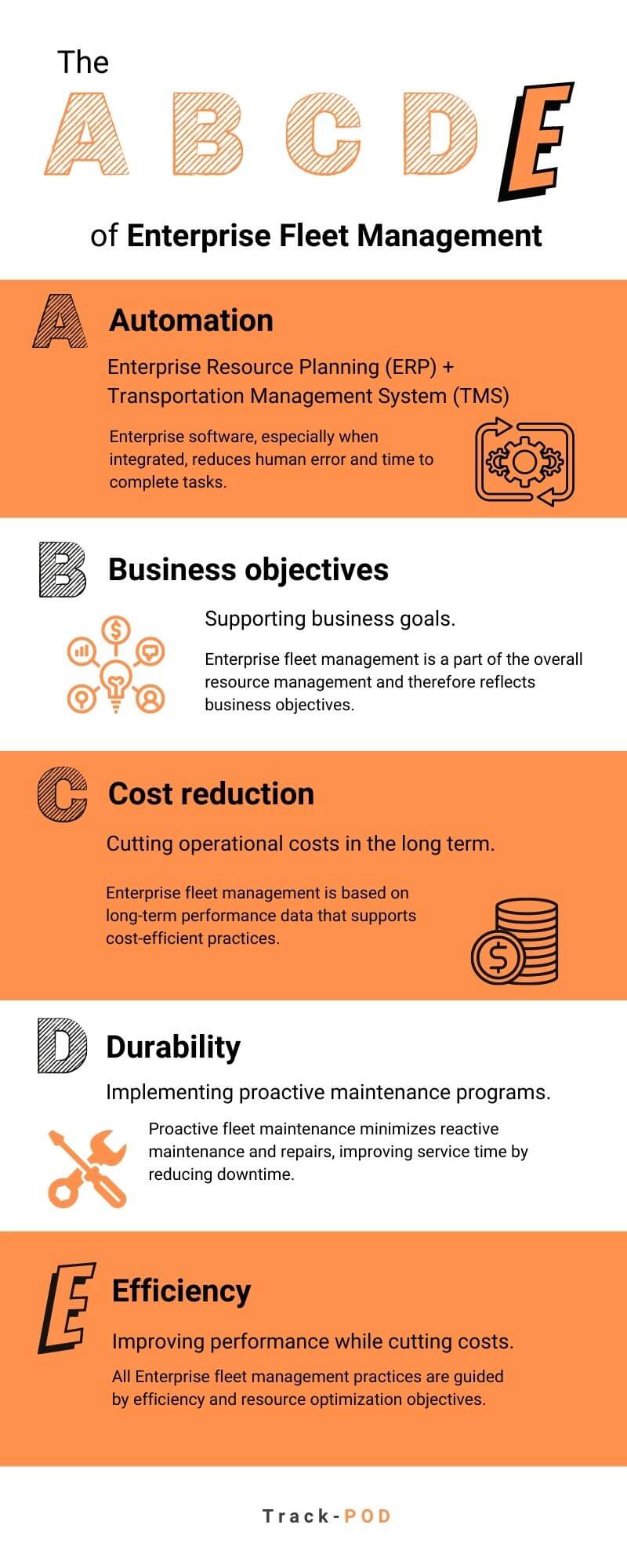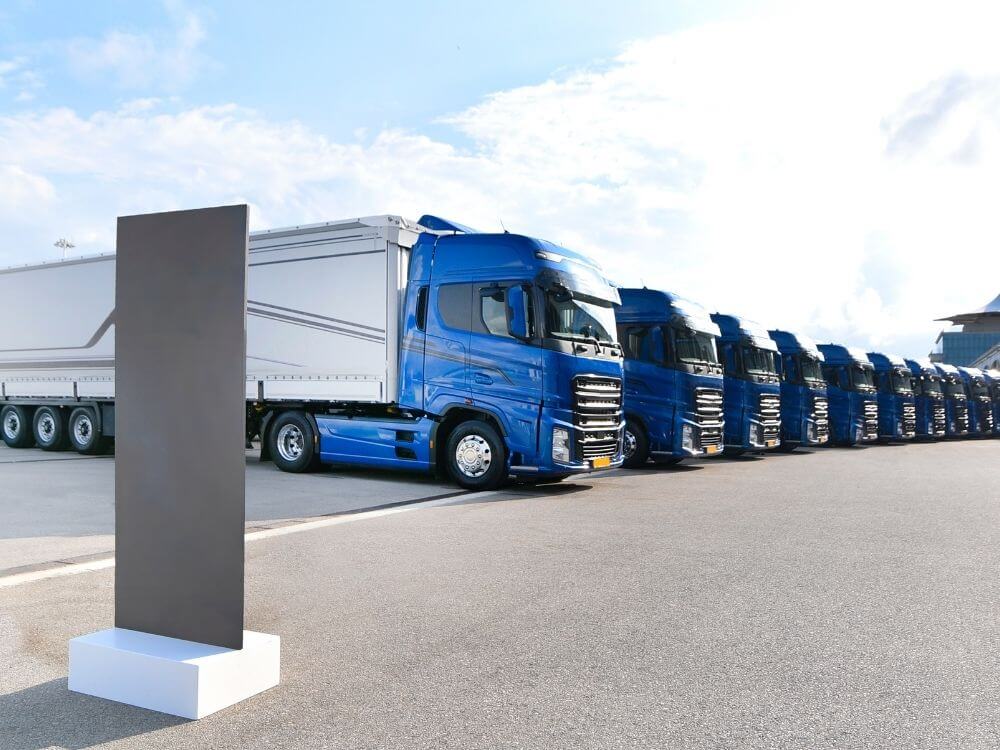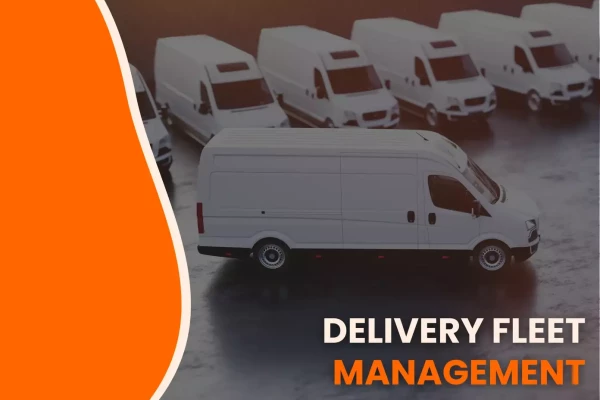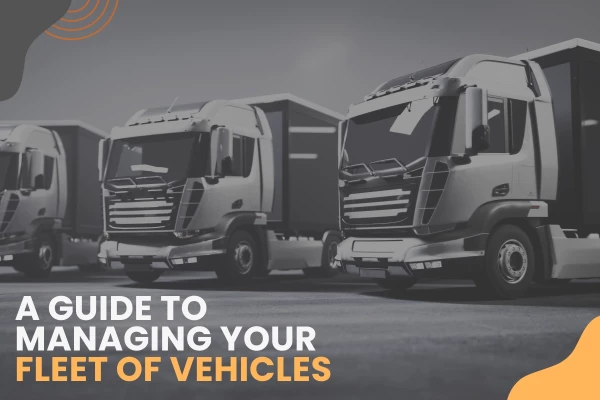The A, B, C, D, E of Enterprise Fleet Management

by
Yulia Miashkova
August 18, 2021
Enterprise fleet management is the backbone of any Enterprise logistics operation. It comes with its unique challenges specific to the industry and size of the business. Yet there are some things most Enterprise fleets share, and this is what we're looking at in this blog post.
Keep reading to learn more about Enterprise fleet management and the tried and tested ways to make it cost- and resource-efficient.
What is an Enterprise fleet?
An Enterprise fleet is a fleet of cars, trucks, or any commercial vehicles utilized by a business. As per the nature of Enterprise companies, Enterprise fleets are on the bigger side, i.e. at least 15 commercial vehicles and all the way to thousands of vehicles (think freight forwarders handling freight logistics).
The number of vehicles in the fleet is not the only thing that determines if a fleet can be categorized as Enterprise. Another similarity among businesses with Enterprise fleets is that they rely on fleet managers to watch over each vehicle being maintained and used to its full capacity.
What is Enterprise fleet management?
Enterprise fleet management is a part of Enterprise resource management that covers all services built around the company's vehicles. The services in question are maintenance (proactive and reactive), repairs, routing, fleet optimization, and the overall costs and resource optimization for the good of the business.
Let's take a closer look at the A, B, C, D, and E of Enterprise fleet management.

Automation
In an operation as complex as an Enterprise company, automation is a must. To serve customers and support supply chain management, businesses implement programs and tools that fuel growth based on data and analysis.
The main tool in question is Enterprise resource planning (ERP) software utilized for every core service in the company. ERP integration is what makes Enterprise resource management possible since it ensures that all systems are connected and data flows smoothly between different parts of the company.
Business objectives
Business objectives and goals are always in focus when it comes to Enterprise fleet management. After all, the job of a fleet manager is making sure that every vehicle in the fleet performs to its maximum capacity and brings the overall operational costs down, which is achieved with the help of Transportation Management Systems (TMS) like Track-POD.
Service quality and resource efficiency are what determines if the Enterprise is leading the industry, so companies make sure business objectives are always intertwined with fleet management decisions.
Cost reduction
Cost reduction is the result every employee of the company - from a driver to the president - can get behind. Having access to performance analytics tools is not enough to make profitable decisions.
Customers, suppliers, and merchants expect top-quality services, and oftentimes that includes things like free delivery. Enterprise fleet management should therefore always lead to lower costs and more options.

Durability
Enterprise fleet management is impossible without a solid maintenance program. When we talk about maintenance, we mean both proactive maintenance and reactive maintenance or repairs. However, a sign of good fleet management is a preventive maintenance program implemented across the entire logistics staff.
Having the help of drivers and not only designated mechanics allows fleet managers to see to all cars and trucks before there's a need for commercial vehicle repairs.
Efficiency
Efficiency is the motto of all resource management, including fleet management, programs. Top efficiency across departments moves Enterprises forward, and fleet management is one of the things to watch out for.
Regardless of the industry, no Enterprise service can be wasteful or inefficient. That is why logistics managers search for new ways to make Enterprise fleet management better for the sake of customers and the larger business.

How to improve Enterprise fleet management
The key to improving the efficiency of any Enterprise operation or service is two-fold.
- Watch out for performance gaps.
- Search for ways to optimize with the help of people & tools.
On the people front, any Enterprise president realizes the importance of having great fleet and logistics managers that watch over the entire operation and contribute with insider knowledge and expertise.
On the tools side, there's excellent fleet management software that makes the job of fleet managers so much easier. From commercial vehicle routing to fuel management, major aspects of managing a logistics service can be automated to perfection.
If you need help taking care of your Enterprise fleet, get in touch with our team or continue exploring the Track-POD website to see if there's a solution that fits your needs.
About The Author
Yulia Miashkova
Growth marketing manager with a background in public relations, SEO, social listening, and Account-Based Marketing.








